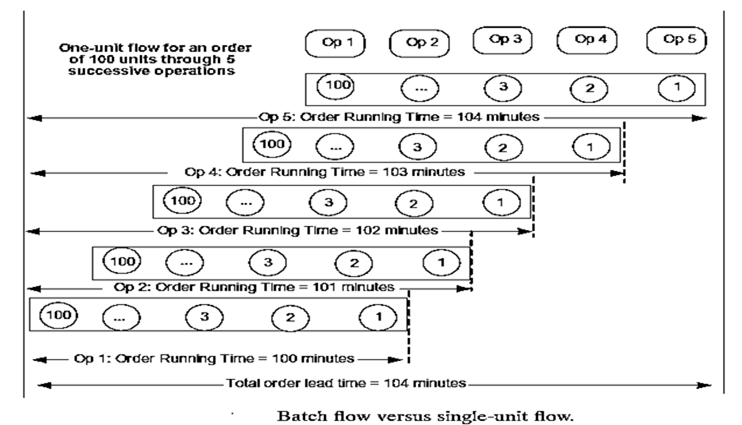SKEDSOFT
Group technology:
1. Manufacturing systems consisting of functional cells are not compatible with lean manufacturing since the frequent cell-to-cell (function-to-function) flow creates several types of waste in excessive transportation, inventory, and overproduction (to better utilize the equipment). Also, as the product family grows and product flow increases in complexity, a mixed work cell (cellular manufacturing) is needed so that a series of operations for several products are performed. This type of work fits a lean manufacturing environment where high-mix; low-volume products can be smoothly manufactured.
2. In cellular manufacturing, cells are frequently organized in a U-shape within a certain product flow so that operators can manage different machines with the least traveled distance.
3. Group technology, developing families of parts, is often used in conjunction with cellular manufacturing.
4. Group technologyrefers to the process of studying a large population of different parts and then dividing them into groups of items having similar characteristics in material, geometry, processing, and so on.
5. Group technology is often executed (groups are identified and coded) with the aid of CAD/CAM software tools, where processing information can be retrieved quickly and easily. Identifying product families implies that they can be produced by the same work cell (a group of machines, tooling, and people) with only minor changes in procedure or setup.
6. Cellular manufacturing provides numerous benefits to companies adopting lean technology. First, with the increasingly growing trend for higher productivity and short manufacturing lead times, cells have become popular in a variety of industries.
Batch Size Reduction (Single-Unit Flow):
1. Small lot production (ideally, one piece) is an important component of any lean manufacturing strategy. Lot size directly affects setup time, inventory levels, and lead time. Thus, the batch size is reduced in lean manufacturing to increase agility in responding to customer needs without building up inventory.
2. Ordering smaller lots from suppliers helps reduce inventory holding cost but increases the ordering frequency. Hence, the economic order quantity (EOQ) is often determined based on a compromise between the ordering costs and the inventory holding costs:

